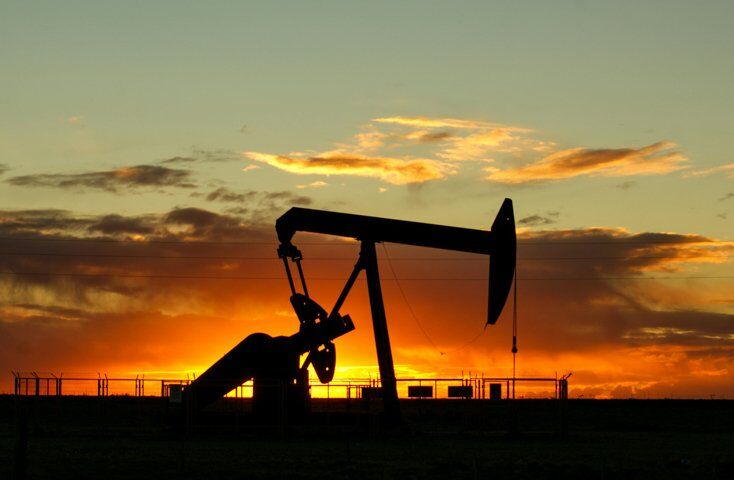Twofers: Solving the Climate and Other Issues at the Same Time
Climate change has become almost impossible to reasonably deny anymore, as has the need for a swift, decisive, and thorough response. Surging in the last decade, CO2 emissions globally are reaching new highs despite growth In renewables. Climate change has come home to roost, even in the United States, in a fierce and relentless way. Last year logged the most billion-dollar extreme US weather events, 28, since the government began recording this statistic. There were droughts; floods; severe storms, such as California’s atmospheric rivers; wildfires; and cyclones. The 1980-2023 average is 8.5 events (adjusted by the consumer price index); for the past five years, the average is 20.4 events. Also in 2023, numerous temperature records were shattered here and around the world. The City of Phoenix for example set a new record for every month of the year from June on, including a July where the temperatures hit 110’ every day of the month, and never went below 90’ at night. Heat deaths set a new record.
Our Reliance on Fossil Fuels

Transforming our offending fossil fuel-based economy is becoming more and more urgent. This transformation is all still too much of a tentative ‘novelty,’ without whole-hearted commitment and full-spectrum support. The decarbonization of energy markets and the switch from fossil fuels to renewables may be “the biggest market opportunity in history,” as Al Gore once said, but it is also going to radically alter the face of the major energy production industry that has dominated the country, and many individual states, for over a century. Big Oil and Big Coal will receive a dramatic makeover; reserves will have to stay in the ground untapped, and their profits along with them; revenue sources will have to change in many fossil fuel-producing states, including California, Colorado, New Mexico, Washington, Texas, and Wyoming; gas stations will all but disappear.
But the air will clear. Burning fossil fuels to run our cars and trucks and to generate our power create most of our considerable air pollution problems and cause mostly unnoticed health and longevity issues, worldwide. Beyond ameliorating extreme weather events, this effect is perhaps the most positive benefit to decarbonizing the economy, one of a number of ‘twofers,’ in which we can help solve two problems at one stroke, creating major social and environmental benefits while we transform our energy economy.
There are numerous other twofers – a partial list includes: The benefits of forest, grassland, and soil restoration; the solarization of homes and buildings and the cost savings this will pass on to struggling families; the placement of solar panels on water distribution canals, generating energy at the same time as lowering water evaporation losses; the potential to remove or reduce hydro-power dams across the West as alternative forms of energy generation and restore river flows; an end to regular oil spills and leaks.
When Will Air Quality Improve?

Air quality benefits – A full 28% of greenhouse gas emissions are attributed to traffic in the US. At the same time, these millions of gas-burning cars are the largest source of local air pollution in most cities. The wholesale switchover to EVs will clean the air dramatically and help prevent the millions of illnesses and premature deaths that that dirty air causes.
The problem is massive in numerous foreign cities like Delhi, India, and Beijing, China, but is plenty bad here in America, where western cities with known air inversion problems include LA, Salt Lake City, and Phoenix. A recent report by the American Lung Association documents the extent of the problem in the US. By 2050, ALA estimates, there could be 2.79 million fewer pediatric asthma attacks; 147,000 fewer bronchitis cases; 2.67 million fewer cases of pediatric upper respiratory symptoms; and 1.87 million fewer lower respiratory symptoms. The cumulative savings in health care are estimated at $1.2 trillion! This will especially benefit our lower income neighbors, who are disproportionately affected by air pollution while at the same time having more trouble meeting inflamed medical bills.
Air Pollution is also linked to increased respiratory and heart problems, and is associated with higher risks of depression, anxiety, and even suicide, according to the report. Globally, 8.8 million people are estimated to die prematurely every year because of air pollution, disproportionately affecting the poor and people of color. Currently, about 5% of vehicles are electric; but even just a 30% switchover will help clear the air enough to save lives and money.
Benefits of Solar Energy

Every Building a Solar Generator – Wouldn’t it be an amazing future if every house and building were its own energy generator! California has taken a lead on this concept through its building codes by mandating solar PV infrastructure be added to every new house and building built after 2020.
The economics are noteworthy – yes, the houses cost more, about $8,400 each on average, according to energysage.com, which increases a typical mortgage by about $40 per month. But the electricity savings are in the neighborhood of $80 per month, totaling a net gain of about $500 per year. This decentralized approach not only increases local self-reliance and helps clean the air, but it also provides some relief to affordability issues. California has more than four times as much solar energy generated as the next highest state, North Carolina.
Why is Reforestation Important?

Reforestation and Biodiversity Crisis – The global climate crisis is one of several drivers of the global biodiversity crisis, and part of the solution to both crises is to restore natural ecosystems. This can be done in part by growing billions of more trees. Most people assume that the wood in trees comes from the soil. But it’s through photosynthesis that plants convert carbon from ‘thin air’ (in the form of CO2) to simple sugars. This then becomes wood, roots, and leaves. And some of this material breaks down, incorporating into the soil. The soil’s capacity to store carbon is vast – in just the top few feet the soil can contain over three times as much carbon as do plants and trees and more than twice as much as the atmosphere (Gore, Al, Our Choice, p.198).
Reforestation restores carbon sinks in trees and their supporting soils, and it restores habitat. Restoring prairies and other grasslands and wetlands and even industrial farmlands to organic or sustainable farmlands helps restore carbon into rich, black, living soils. Loss of forest, grassland, and wetland habitats has led to multiple species’ decline and loss of ecosystem integrity and health. Tons and tons of topsoil has been lost over vast areas since the widespread plowing of farmlands began in the US in the mid-19th century. While some became airborne (as in the Dust Bowl), much of that has eroded into streams and rivers, destroying aquatic systems at the same time, altering their banks and bottoms, a destructive twofer. Widespread reforestation and ecosystem restoration has a major role to play in restoring the health of the land and water and the species that live on them, while at the same time withdrawing tons of carbon out of the atmosphere.
Meanwhile, despite the clear and present dangers of extreme weather and temperature events, global CO2 emissions have reached a new record high, according to a new International Energy Agency (IEA) report, published in February 2024. Fossil fuel use was up last year in countries where climate-driven droughts reduced hydropower production. Even though wind, solar, and EV use was up, they collectively only had the effect of reducing the rate of emission increase, to 1.3% in 2022. In the US though, energy-related emissions fell by 4.1%. In China emissions from energy were up 5.2%, even though China alone accounted for about 60% of the increase in the use of solar and wind energy generation and new EVs. It’s as if we’re bipolar – making things better while at the same time making them worse.
Related Articles:

